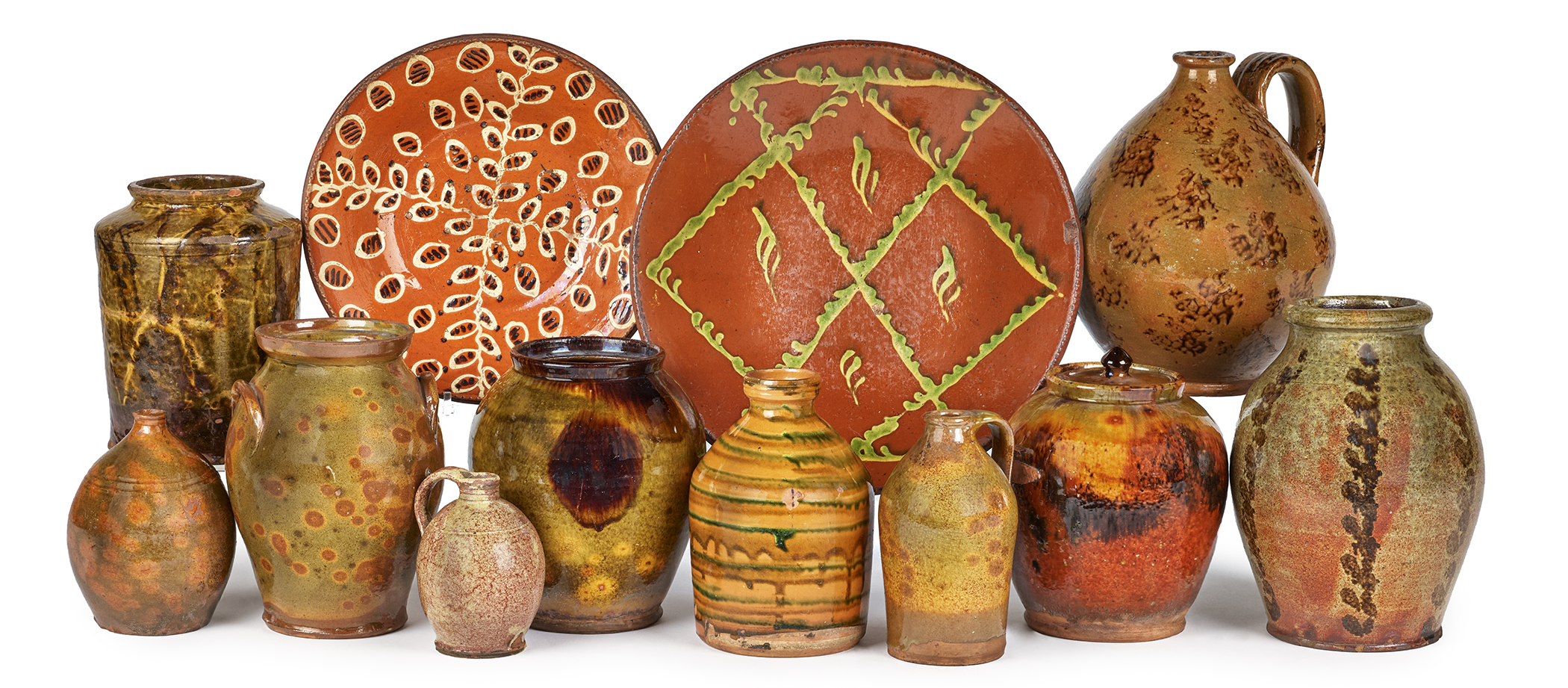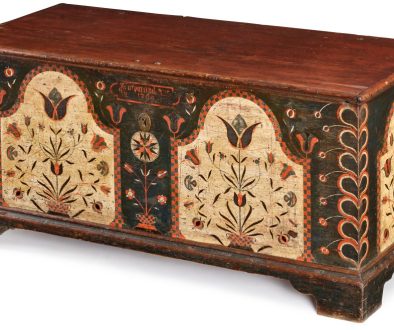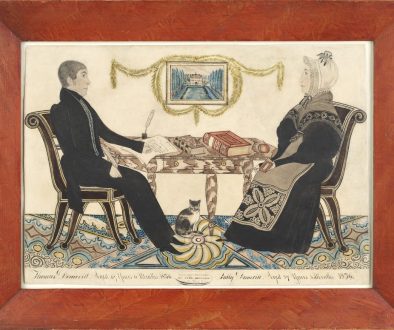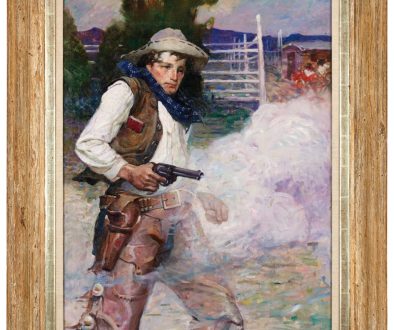The Levine Redware Collection
Pook & Pook is pleased to offer in the October 5th and 6th Americana sale a private collection holding some of the most beautiful examples of American redware. Ellen and Richard Levine, of New York, were discerning collectors, finding rare, quality pieces.
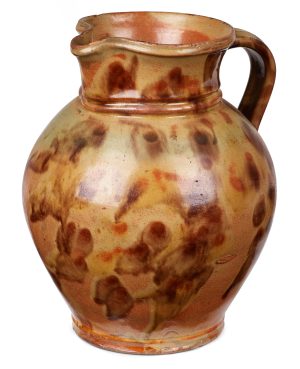
Lot 4
Many of the New England pieces are washed in glazes that bring to mind the effects of dappled sunlight on the pebble bed of a clear stream. The colors are of the earth: lead reds, iron ochres, ambers, and oranges, copper greens, and manganese and iron dark purple browns. The greens range from teal to olive, from apple to jade, to a translucent glaze so pale it resembles celadon. Single fields of glaze contain a multitude of colors, mottled, dappled, and dripped together. The variations are the result of the metal oxides in the clay and glazes, drips from other pots, variations in firing temperature, and even the flow of oxygen through the kiln. On some examples, potters fingerpainted or brushed a second glaze of another color, producing blotches and spatters that bloom across the surface, each with an aureole of underlying color. The beauty imparted by each potter is astonishing. The ovoid shapes are perfect in their simplicity. These were utilitarian objects, their production limited to local resources and minerals, with no objective other than to be used for prosaic tasks. Yet each has a graceful, hand-formed curvature, a beauty of proportion, and a depth of glaze that raises them into the realm of art. When viewed together, the group is harmonious, with gently curving lines, graceful proportions, and subtle colors.

Lot 1
Two visually arresting chargers include a rare Pennsylvania or Maryland example with a cream and brown slip decoration of two crossed vines of striped leaves with berries, on a background buzzing with striped ovals. The second is a Pennsylvania charger with yellow and green slip geometric decoration resembling crossed boughs. The transparent green glaze overlaps the yellow, the shadow on the field producing a pronounced three-dimensional effect.
In addition to works by Pennsylvania potters John Bell and Jacob Medinger, a scarce New York redware bottle has a known maker. Attributed to the early Mormon leader Heber Kimball, an amber bottle has blurred concentric bands of green and brown, and a glassy lead glaze. In the 1820’s Kimball worked as a potter in Mendon, purchasing the works from his brother. Soon after creating this bottle, ca. 1830, Kimball was baptized and headed west, eventually becoming one of the first pioneers to settle in Salt Lake City. Another of his bottles is exhibited there in the Museum of Church History.
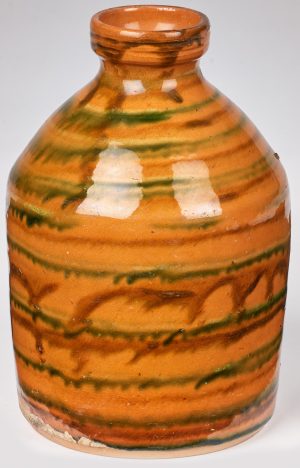
Lot 5
By Cynthia Beech Lawrence

